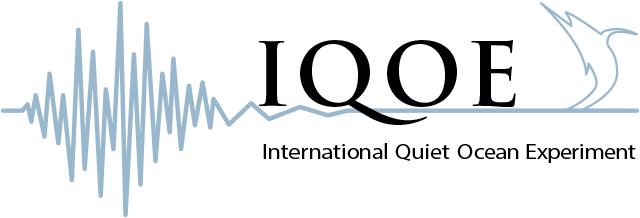IQOE News
We’re proud to share that our Global Sounds: Low-Cost Hydrophone Project has been officially endorsed by the UN Ocean Decade as a Decade Action!
This IQOE initiative is designed to make underwater sound monitoring more accessible and inclusive, by developing affordable, open-source hydrophones for research, education, and community science worldwide. Sound is a critical component of healthy marine ecosystems — and by democratising access to acoustic monitoring tools, we aim to empower a global network of users to better understand and protect our oceans.
A big thank you to all our collaborators and supporters. Together, we’re listening to the ocean — and amplifying its voice. ![]()
![]()
From Lucille Chapuis, Chair, IQOE Task Team on Low-Cost Hydrophones for Research, Education, and Citizen Science
QOE has been compiling metadata of ocean PAM recordings since early 2020. As of today, there are 3,875 public and 681 private records since 1999 that are one day or longer in duration, and 99,802 shorter recordings.
IQOE will close submission for the first metadata product on 30 April 2025. After this time, a DOI will be sought for the metadata product comprised of the short- and long-term public metadata, with all metadata providers listed as contributors to the product. An article will be written describing the metadata and submitted to a peer-reviewed journal.
Please submit or update your metadata using this form.
IQOE intends to update the database at least annually with additional metadata submitted.
Please contact me if you have any questions or suggestions about this process.
Best regards,
Ed Urban
IQOE Project Manager
Peter Tyack, one of IQOE's co-chairs made a presentation about IQOE progress at the annual meeting of the Partnership for Observation of the Global Ocean (POGO), in in Penang, Malaysia, from 25 to 28 February 2025. The slides from the presentation are available here.
IQOE is in the process of collecting metadata for 2023 ocean sound observations. This map shows the locations for metadata collected so far. Please contact Ed Urban to submit additional metadata.
Session OT023: Exploring and Characterizing Deep and Coastal Ocean Soundscapes (see Ocean Sciences Meeting 2024 (agu.org) to submit an abstract.
First World Ocean Passive Acoustic Monitoring (WOPAM) Day
An outcome of the International Quiet Ocean Experiment was the first World Ocean Passive Acoustics Monitoring (WOPAM) Day, on 8 June 2023. IQOE leaders, particularly Miles Parsons and Steve Simpson, prepared two very cool 90-second videos to initiate WOPAM Day.
Downloadable at this site. 150 MB each, but they download quickly.
15 May 2023
Guardian newspaper feature on International Quiet Ocean Experiment
Science and environment reporter Alice Hutton wrote a lively and informative article for the UK Guardian newspaper about the IQOE:
Listen to a toadfish’s grunt! AI helps decode a ‘symphony’ of ocean sounds
1 May 2023
News from the International Quiet Ocean Experiment
Terry Collins artfully summarized progress in this news release about the International Quiet Ocean Experiment. The news was picked up by
Agencia EFE: Artificial intelligence listens to the habits of marine life (in Spanish)
Independent (London): Scientists eavesdrop on underwater creatures to gain insights on ocean life
Earth.Com: Monitoring ocean life through underwater soundscapes
Portal R7 (Brazil): Biólogos marinhos captam zumbido não identificado que pode ser uma nova espécie de peixe Marine biologists capture unidentified tinnitus that can be a new species of fish (in Portuguese)
Vice/Motherboard: Scientists Recording Ocean Sounds Picked Up a Mysterious ‘Buzz’ They Can’t Identify
ORF Online (Austria): Unterwassermikrofone belauschen Fische Underwater microphones eavesdrop on fish (in German)
Scientias (Netherlands): Moet je horen! Vissen maken fascinerende balts- en eetgeluiden, vooral bij volle maan You have to hear! Fish make fascinating balts and eating noises, especially at full moon (in Dutch)
23 April 2023
Interim Evaluation of International Quiet Ocean Experiment
Interim Program Self-Evaluation of the IQOE for the International Scientific Steering Committee meeting 26-27 April 2023.
The Consortium for Ocean Leadership (COL) coordinated a full-day hybrid-format workshop on 29 April 2022 to gather input from the ocean sound and acoustics community to contribute to the Maritime Acoustic Environment (UN-MAE). The workshop was supported by the Richard Lounsbery Foundation. The summary report in English is listed below, as well as translations into Arabic, Hindi, Mandarin Chinese, and Spanish.
World Oceans Passive Acoustic Monitoring Day (WOPAM Day)
Passive acoustic monitoring (PAM) has developed significantly over the last 20 years and hydrophones are now being deployed in more locations, more often, by more people, than ever before. To celebrate the increasing breadth of the application of PAM around the world, and help promote public awareness of Ocean Sound to an increasingly interested global community, a new initiative has proposed a celebration of aquatic PAM on World Oceans Day (June 8).
Through the Global Library of Underwater Biological Sounds (GLUBS), a call has gone out to hydrophone operators for their interest to participate in a World Oceans Passive Acoustic Monitoring (WOPAM) Day. The premise for the first year of this initiative is simple; to share data from any already planned deployments recording on June 8th for a collaborative study of our global aquatic soundscapes, whether in salt, brackish or freshwater.
So, if you already have a hydrophone in the water, that will be recording on June 8th (or have a planned project to deploy before then), and are interested in participating in WOPAM Day, please contact Miles Parsons (m.parsons@aims.gov.au) or Steve Simpson (s.simpson@bristol.ac.uk) for further information.
